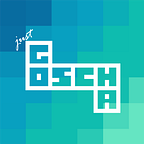Software & Hardware I use for Animation
*** EDIT 2022: Hi, this article is written in 2016. For an updated version of the software I use, I suggest reading, this 👇 instead:***
Here I’ll briefly explain the animation setup I have used for my #100DaysOfWalkcycles challenge.
Hardware
PC from 2011 (8GB RAM, GeForce GTX 560 Ti, Intel i5 2500K)
I use a medium sized Wacom Intuos 4 Pen Tablet, that I bought for around 100 Euro on Ebay, as input method to draw on my Windows PC (from 2011). A pretty good deal! It is a good drawing tablet if you are comfortable with not looking at your hands while drawing. A newer Intuos tablet should do the job just as well. I’d rather have a Wacom Cintiq, but that’s totally out of my price range at the moment.
Software
I use the CS6 version of the Adobe software that’s listed here because it was the last version you could buy and didn’t have to pay a monthly fee for.
If you’re looking for free software to get started, check out my updated article from 2019:
Adobe Photoshop
Did you know you can animate with Photoshop? Oh, you did…? Well, I thought I did, too. I used to animate frame-by-frame with one layer per frame. Which would get pretty confusing if you’d like to animate something with more than just 10 frames. But there is another way called Video Layers, which can hold all of your frames in a single layer. I use Photoshop CS6 Extended (it is only in the Extended version from CS5 onwards). There you can go to Layer > Video Layers > Create New Blank Video Layers to create one. Now you only need to go to a position in the timeline and then Layers > Video Layers > Insert Blank Frame to insert a new frame.
Here are two great in-depth tutorials and tips & tricks videos for Photoshop animation by the awesome Australian animator Alex Grigg:
Photoshop Animation Techniques — A Full Tutorial
Photoshop Animation Techniques (Redux, Creative Cloud) (an updated tutorial for Photoshop CC)
Conclusion: The timeline tools are not as powerful as you would expect from a real animation app, but the brush tools, layer effects and other workflows you’re used to from Photoshop sure make up for some of its downsides.
Krita
An open source contender for Photoshop. Where it tries to compete is especially in the realm of digital painting, comics, game asset creation and, just recently, in animation. It has great tools for quite a lot creative purposes and a really powerful brush engine, that surpasses Photoshop’s in almost every aspect. The user interface is not as clunky as you would expect from most open source programs (I’m looking at you GIMP) and follows the footsteps of Photoshop, mostly.
The animation branch of Krita is still in Beta and will probably undergo significant changes in the recent future, but it’s on a good way and works better than Photoshop’s timeline already. It has support for customizable onion skins, good keyframe functionality, especially inserting frames, holding of frames etc is fairly straight-forward and works as you would expect from an animation program. Only downside, you can not directly export to a video format or GIF.
Conclusion: Awesome, a great tool for zero budget. Hopefully will even get better with time. But, probably not completely stable at this point and source files you make now, may not work with the final releases of the software, so don’t forget to back it up in other future proof file formats.
Adobe Flash
One of the programs, which is still widely used in the animation industry, although not as popular as some others. It has a good timeline although not great, and it is vector based. My views on Flash are highly subjective. I liked it when it was the only tool available to me, but I always hated the drawing capabilites. The brush just never feels right, also I don’t really like the that it’s vector based, but that’s a matter of preference.
Conclusion: If you like to animate with tweens, or frame-by-frame and also like vector-based animation and the ability to scale your animation indefinitely, it’s a great tool.
Adobe After Effects
Industry standard for motion graphics. Not that much experience in it, but it’s amazing what some people do with it. Not really that useful for frame-by-frame animation, but maybe for the final compositing.
UPDATE: I cut the final video of my #100DaysOfWalkcycles challenge with it, and although I had some issues it is pretty okay to cut things, to music with it!
UPDATE 2 (10th April 2016):
OpenToonz
The software of Studio Ghibli and Futurama that was recently released for free. It’s probably nothing for newcomers. It is full of animation industry jargon and the interface looks like from the 90s. I think it’s pretty good if you have to animate large projects, because it’s made to streamline specific processes. But you should give it some time if you’re not an early adopter and not familiar with other animation programs. Let the animators figure it out, make tutorials and tweak it first. Then look at it next year maybe.
